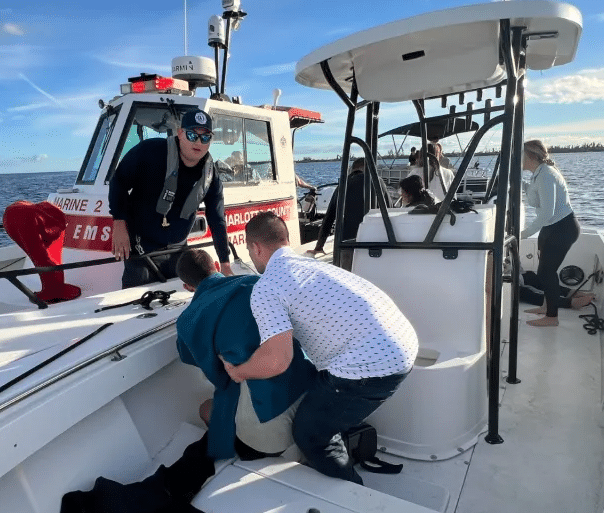Advanced Tax Shelters: GRATs and QPRTs
Sophisticated Strategies for Tax Minimization
Grantor Retained Annuity Trusts (GRATs) and Qualified Personal Residence Trusts (QPRTs) are advanced irrevocable trusts designed to reduce federal estate taxes for Sarasota’s high-net-worth residents by transferring appreciating assets or real estate with minimal tax impact. These trusts are particularly effective for estates with significant real estate, investment portfolios, or business interests, common in Sarasota’s affluent market. Sarasota.law provides this detailed guide, supported by authoritative links, to explain their mechanics, benefits, and considerations.

Understanding Grantor Retained Annuity Trusts (GRATs)
GRATs are designed to transfer appreciating assets to heirs with minimal gift tax liability:

Structure
The grantor transfers assets (e.g., stocks, business interests) to an irrevocable trust, retaining the right to receive fixed annuity payments for a specified term (e.g., 2–10 years). At the end of the term, the remaining assets pass to beneficiaries, typically heirs, per Taft Law.
Tax Mechanism
The gift’s taxable value is reduced by the present value of the annuity payments, often resulting in a minimal or zero gift tax, assuming the assets appreciate beyond the IRS’s assumed growth rate (the Section 7520 rate), per the Internal Revenue Service.
Example
A Sarasota investor transfers $2 million in stock to a GRAT, receiving annuity payments over 5 years. If the stock appreciates significantly, the excess value passes to heirs tax-free, reducing the taxable estate.
Understanding Qualified Personal Residence Trusts (QPRTs)
Structure
The grantor transfers a residence to an irrevocable trust for a specified term, retaining the right to live in the property during that period. At the term’s end, the property passes to beneficiaries, typically heirs, per Trustworthy.
Tax Mechanism
The gift’s taxable value is reduced by the value of the grantor’s retained use, lowering the gift tax liability. If the grantor survives the term, the property’s full value is removed from the taxable estate, per the Internal Revenue Service.
Example
A Sarasota retiree transfers a $3 million vacation home to a QPRT for 10 years, continuing to use the property. If they survive the term, the home passes to their children, significantly reducing the taxable estate.

Benefits of GRATs and QPRTs
Both trusts offer significant advantages for Sarasota’s high-net-worth residents:

Estate Tax Reduction
Remove assets and their future appreciation from the taxable estate, minimizing federal estate tax liability for estates exceeding the $12.92 million 2023 exemption, per the Internal Revenue Service.
Gift Tax Efficiency
Leverage low or zero gift tax by structuring the transfer to account for retained interests (annuity payments in GRATs, property use in QPRTs), per Taft Law.
Asset Transfer
Preserve wealth for heirs, particularly for real estate, stocks, or business interests, which are common in Sarasota’s affluent market, per Trustworthy.
Flexibility
GRATs allow short-term commitments (e.g., 2 years), while QPRTs can include primary or secondary residences, offering versatility for varied estate plans, per Sarasota County Bar Association.
Setting Up GRATs and QPRTs

Select Assets
For GRATs, choose high-growth assets (e.g., stocks, business interests) to maximize appreciation beyond the Section 7520 rate. For QPRTs, select a primary or secondary residence, ensuring accurate valuation, per Taft Law.
Draft the Trust Document
Outline terms, including the trust term, annuity payments (GRATs), or retained use period (QPRTs), compliant with Chapter 736 of the Florida Statutes.
Fund the Trust
Transfer assets to the trust, requiring appraisals for real estate (QPRTs) or securities (GRATs) to calculate gift tax liability, per the Internal Revenue Service.
Appoint a Trustee
Name a trustee to manage distributions and ensure compliance, per Sarasota County Bar Association.
File IRS Forms
Submit IRS Form 709 to report the gift, documenting the use of gift tax exemptions, per the Internal Revenue Service.
Challenges and Risks
GRAT Risks

Grantor Survival
If the grantor dies during the trust term, the trust assets revert to the taxable estate, negating tax benefits, per Taft Law.
Market Risk
If assets underperform the Section 7520 rate, the tax savings may be minimal, though the grantor faces no financial loss beyond setup costs.
QPRT Risks
Grantor Survival
The grantor must outlive the trust term for the property to be excluded from the taxable estate, per Trustworthy.
Loss of Control
After the term, the grantor may need to pay rent to continue living in the property, adding complexity, per Sarasota County Bar Association.

Complexity
Both trusts require precise drafting, asset valuation, and IRS compliance, increasing legal and administrative costs, per the American College of Trust and Estate Counsel.
Irrevocability
Once established, trust terms cannot be modified, requiring careful planning, per Taft Law.
Why GRATs and QPRTs Matter in Sarasota
Sarasota’s real estate-heavy market, with primary residences, vacation homes, and investment portfolios, makes GRATs and QPRTs highly relevant. GRATs capitalize on asset appreciation, ideal for stocks or business interests, while QPRTs address real estate, a significant component of Sarasota estates. These trusts enable residents to transfer wealth to heirs with minimal tax impact, preserving estate value for future generations.

Steps to Implement GRATs or QPRTs
Assess Asset Growth Potential
Consult Professionals
Plan Trust Term
Review Regularly
Frequently Asked Questions (FAQs)
What assets are best suited for a GRAT?
High-growth assets, such as stocks or business interests, maximize tax savings by outperforming the IRS’s Section 7520 rate, per Taft Law.
Can a QPRT include a vacation home?
Yes, QPRTs can include primary or secondary residences, making them ideal for Sarasota’s real estate market, provided the grantor survives the term, per Trustworthy.
Are charitable trusts only for large estates?
Yes, they require precise drafting, asset valuation, and IRS compliance, necessitating professional expertise, per the American College of Trust and Estate Counsel.
What happens if I die during a GRAT or QPRT term?
If the grantor dies during the term, trust assets revert to the taxable estate, negating tax benefits, requiring careful term selection, per Taft Law.
Key Resources
Next Steps
Consult a Florida-licensed attorney to evaluate whether a GRAT or QPRT is suitable for your estate, particularly if you have appreciating assets or significant real estate. Work with a CPA to ensure accurate valuations and IRS compliance, maximizing tax savings.

